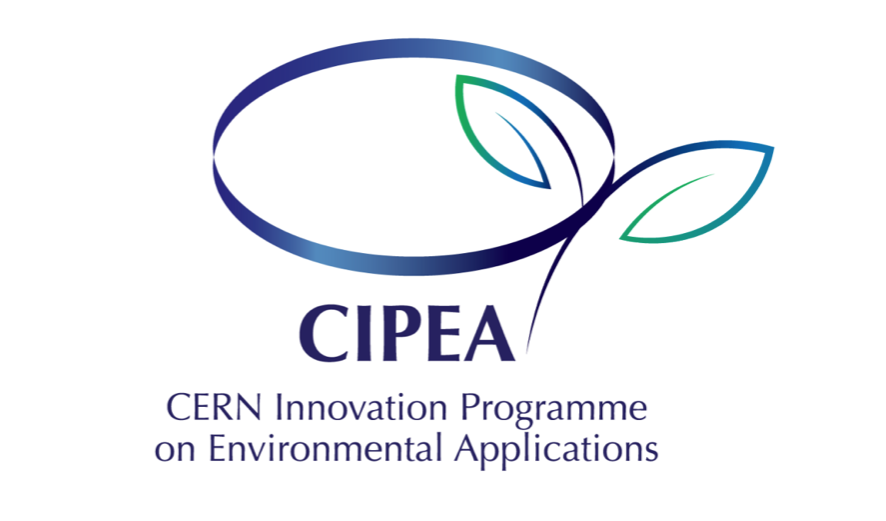Superconductivity, a cool technology to make airplanes more efficient and lightweight
Future aircraft will need to change their energy supply and dramatically reduce their weight. Power distribution systems are the backbone of aircraft but also amongst its heaviest piece. To increase their efficiency and reduce their weight, superconducting technologies have been proposed.
Superconductivity is when, at very low critical temperature, some materials have no electrical resistance and therefore no power loss.
Applied to aircraft distribution systems, superconductivity would highly reduce their weight and enable aircraft to carry electric- or hybrid-electric propulsion system. Doing so could help the prospect of cleaner, hybrid airplanes become a reality.
Superconducting magnet technology has fuelled some of the greatest discoveries in high-energy physics and, applied to aircraft distribution systems, superconductivity would drastically reduce their weight and increase their efficiency.
José Miguel Jimenez, Head of Technology department at CERN
CERN, an expert in superconductivity
CERN has over 40 years of expertise in building world-record superconductive cables which are at the core of existing and next-generation particle accelerators. Such cables present no resistance to the flow of the current and transmitting much higher intensities than traditional, non-superconducting cables.
Today, the innovation triggered by CERN can help revolutionise the aerospace sector. With this new partnership, CERN can help Airbus make the right decision for more efficient and lightweight systems.
In accelerators, superconducting magnet are used to steer, guide and focus the beam before the collisions. Superconductivity is an enabling technology for high-energy physics. Our superconducting magnets are able to transfer very high currents in order to generate very high magnetic fields. In the LHC (Large Hadron Collider) the main dipoles transfer current as high as 11,800 amps to generate magnetic fields of about 8,3 Tesla. High currents mean high fields, which means high energies. The current being transported on superconducting magnets, could not be generated with conventional materials.
To generate these magnetic fields, we have to invest in the development and study of new superconducting materials. An important role in the future is going to be played by the high-temperature superconducting materials which have the capability of transporting high currents at high temperature, as well as of generating very high magnetic field at low temperature. We have started study of the possibility of generating fields of up to 20 Tesla with HTS magnets.
Amalia Ballarino, deputy group leader of the Magnets, Superconductors and Cryostats group at CERN.
A superconductive demonstrator hosted at CERN
The Super-Conductor for Aviation with Low Emissions (SCALE) demonstrator aims to promote the adaptation and adoption of superconducting technologies in airborne electrical distribution systems.
The SCALE demonstrator combines CERN’s expertise in superconducting technologies with Airbus UpNext’s capabilities in innovative aircraft design and manufacturing. First results are expected at the end of 2023. SCALE will be designed, constructed and tested by CERN using Airbus UpNext specifications and CERN technology. The demonstrator consists of a DC link (cable and cryostat) with two current leads. The cooling system is based on gaseous helium.
We are already developing a superconductivity demonstrator called ASCEND (Advanced superconducting and Cryogenic Experimental powertraiN Demonstrator) to study the feasibility of this technology for electric and hybrid aircraft. Combining knowledge obtained from our demonstrator and CERN’s unique capabilities in the field of superconductors makes for a natural partnership”.
Sandra Bour-Schaeffer, CEO Airbus UpNext
CERN and Airbus UpNext, a wholly owned subsidiary of Airbus, are launching a project to evaluate how superconductivity can contribute to the decarbonisation of future aircraft systems. The Super-Conductor for Aviation with Low Emissions (SCALE) demonstrator aims to promote the adaptation and adoption of superconducting technologies in airborne electrical distribution systems.
Sophie Tesauri
Senior Press Officer
+41 22 767 2141
sophie.tesauri@cern.ch

Driving digital innovation with CERN technology
Digital technologies drive almost all aspects of modern life: from basic everyday tasks like measuring the distance walked to creating positive socio-economic impact through digital twins of cities.
CERN technologies pose countless possibilities for such innovative digital solutions. The expertise and technological know-how from CERN can also be used in areas beyond high-energy physics like preventing fraud in financial markets, helping autonomous- driving vehicles make faster decisions, art restoration and digital preservation of cultural heritage, and for contributing towards a healthier and more sustainable planet.
The potential application areas of CERN technologies are obviously not limited to the ones mentioned above. Have a look at our technology portfolio - maybe any of our technologies could apply to your industry? Or maybe your company could learn from any of CERN’s areas of expertise?
Find out more about how CERN technologies and know-how have impact across industries:
Expertise and key competencies for digital technology
Digital related news
Upcoming events related to Digital
Below you can browse archived funded projects based on CERN technology and know-how, or view current projects here.
The exploration of the universe and the search for the secrets of matter face similar challenges to common solutions. CERN's expertise in accelerators, detectors and computing is relevant to aerospace: from microelectronics to data handling, from radiation monitoring to cryogenics and from thermal management to superconducting magnets.
CERN's remarkable technologies, facilities and know-how can play a crucial role in aerospace:
Areas of expertise
CERN has developed radiation monitoring devices, dosimetry sensors as well as instruments to accurately measure radiations in space, predict and prevent damage to electronics and harmful effects on astronauts.
CERN develops and explores radiation-hardened technologies suitable for the most challenging space missions requiring very high reliability.
CERN works hand-in-hand with companies and organisations to improve the radiation tolerance of advanced space systems by design optimisation and commercial-off-the-shelf components screening/selection.
Superconducting technologies enable future environment-friendly aeroplanes and breakthrough space applications.
CERN develops very small and efficient cooling devices, as well as advanced materials and processes for high-thermal flux control.
CERN manages large quantities of data regularly which is crucial for many aerospace applications: from astrophysics and Earth observation, to traffic control and aircraft engines performance monitoring.
Data analysis algorithms, artificial intelligence and quantum computing support ambitious European projects for environment protection and climate change adaptation of our society.
CERN has unique ground installations, especially irradiation and cryogenic facilities, enabling validation and qualification testing of aerospace equipment.
CERN, CHUV and THERYQ join forces for a world first in cancer radiotherapy
CERN, the Centre Hospitalier Universitaire Vaudois (CHUV) and THERYQ (ALCEN Group) have signed an agreement for the world-first development of a revolutionary FLASH radiotherapy device that will use very high energy electron (VHEE) radiation to treat cancers resistant to conventional treatments. The device, based on CERN technology, will be installed at CHUV.
At CERN, part of our mission is knowledge transfer and we actively work to find applications of our breakthroughs outside the domain of particle physics for the benefit of society at large. This collaboration demonstrates how CERN technologies and expertise combined with strong partnerships with experts in other fields can really make an impact.
Mike Lamont, Director for Accelerators and Technology at CERN.
A clinical FLASH facility has been developed, with which large, deep-seated tumors are treated using high-energy electrons. The facility is based on accelerator technology developed for CLIC (Compact Linear Collider) to create a high performance and compact facility that can easily fit on a typical hospital campus.
Walter Wuensch, Project leader at CERN.
As a university hospital, the CHUV is fully committed to research. FLASH therapy embodies the spirit of innovation that drives us in this field. Eager to offer the most effective techniques to patients, we have joined forces with a world-class research center and a cutting-edge industrial partner to solve a medical, physical and technical problem and find innovative solutions to fight cancer.
Pr. Philippe Eckert, Director General of CHUV.
FLASH technology represents real hope for increasing the potential for curing cancers with radiation therapy, and the current stage will enable first crucial clinical developments in this area.
Pr. Jean Bourhis, Head of the Department of Radiation Oncology at CHUV.
THERYQ is honored to contribute its expertise and agility to this project, alongside CHUV and CERN. FLASHDEEP marks a therapeutic revolution, with the potential to significantly increase the number of patients living longer and cancer-free lives.
Ludovic Le Meunier, CEO of THERYQ.
Further media resources

Accelerating the Second Quantum Revolution with CERN Technology
Quantum technologies are set to revolutionise our world by applying the seemingly mysterious laws of physics at the smallest scales to real-world applications such as computing, communications, sensing and imaging.
Many of the extreme requirements faced by quantum technologies are shared with high energy physics such as ultra-high vacuums, precise timing, the need for superconducting materials, and more. For this reason, CERN has built up a wealth of expertise and specific technologies that can directly address challenges in the quantum industry.
The Knowledge Transfer (KT) Quantum team regularly attend events throughout the year and encourage you to get in touch with us if you would like to meet us in person. Please reach out to us in advance by contacting us through the button below.
Meet the KT Quantum team
Expertise and key competences for quantum technology
Learn more and get involved
A call to the CERN Community
 The CERN Innovation Programme on Environmental Applications (CIPEA) has been launched to harness CERN’s innovation potential in environmental technologies. The objective of the programme is to encourage CERN experts to come up with ideas for environmental applications based on CERN’s technologies, know-how and facilities. Some of these ideas are implemented in collaboration with external partners giving rise to impactful projects. In March 2022, the CIPEA programme was launched with a kick-off event.
The CERN Innovation Programme on Environmental Applications (CIPEA) has been launched to harness CERN’s innovation potential in environmental technologies. The objective of the programme is to encourage CERN experts to come up with ideas for environmental applications based on CERN’s technologies, know-how and facilities. Some of these ideas are implemented in collaboration with external partners giving rise to impactful projects. In March 2022, the CIPEA programme was launched with a kick-off event.
In June 2022, the CIPEA Innovation Day welcomed many innovative project proposals reflecting the CERN community’s commitment to tackling environmental challenges. In many cases, external partners are also involved in the proposals, as project contributors or financial users of the target results. several projects obtained funding from the CERN Knowledge Transfer fund.
Discover the CIPEA projects




